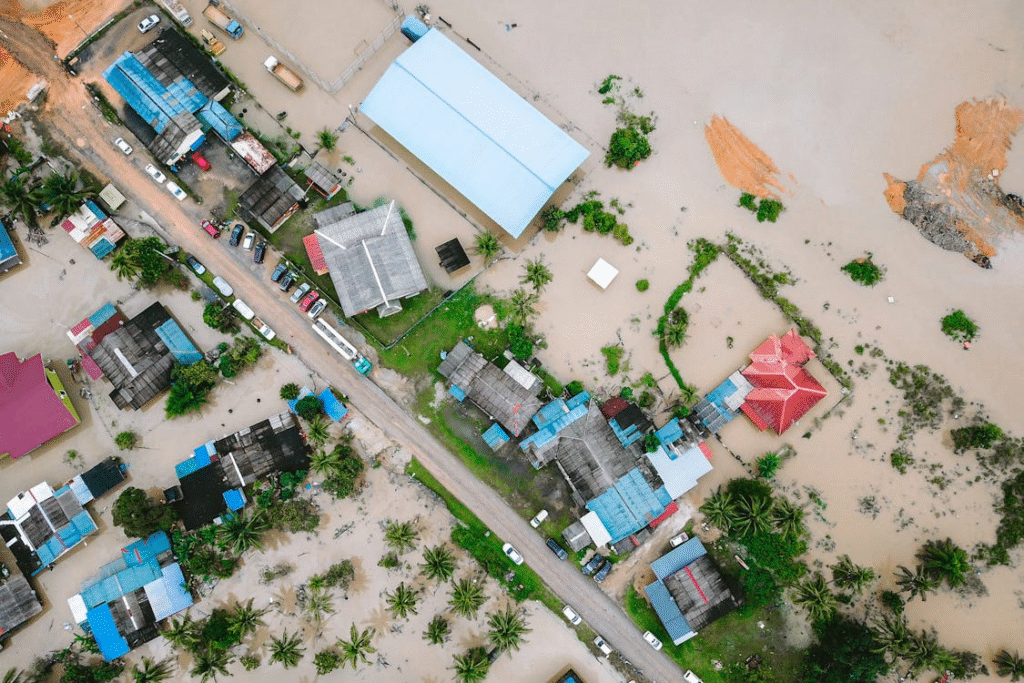Climate Change and Insurance: How to Protect Your Assets
Learn how climate change impacts the insurance industry and discover practical steps to protect your assets.
Climate change and insurance: a complete guide

Climate change has been having visible and growing impacts on various sectors, including the economy and the insurance market. With extreme weather events becoming more frequent and intense, many property owners, businesses, and farmers have been asking: how can I protect my assets against the unpredictable effects of nature? The answer may lie in proper insurance planning.
In this post, we will explore how climate change affects the insurance sector and how you can take steps to protect your assets.
The Impact of Climate Change on the Insurance Sector
Climate change is altering the global risk landscape. Rising sea levels, intense heatwaves, prolonged droughts, and violent storms are becoming more common.
This increase in the frequency and intensity of natural disasters puts significant pressure on insurers. This is because the damage caused by these events is often unpredictable and of large scale, requiring high payouts to compensate policyholders.
Insurers are increasingly facing challenges in calculating the risks and costs associated with these extreme weather events.
As a result, they have been adjusting their policies by raising insurance premiums or even excluding certain types of coverage related to natural disasters.
Additionally, many insurers are implementing clauses that limit or exclude coverage for damage caused by climate change, particularly regarding events such as floods and wildfires, which are becoming more frequent.
Tips for Protecting Your Assets from Climate Change
Now that we understand the impact of climate change on the insurance industry, here are some practical tips to protect your assets. Check out the details below!
Review Your Policies Regularly
Constantly reviewing your insurance policies is essential to ensure you have adequate coverage, especially regarding climate-related risks.
Make sure your home or property insurance includes coverage for damages caused by natural disasters, such as floods or fires, if you are in a risk-prone area.
Consider Insurance for Natural Disasters
Standard insurance policies may not cover all climate-related risks, particularly those caused by extreme weather events.
Consider purchasing specialized coverage, such as flood insurance or earthquake insurance, to protect your property against these specific threats.
In areas prone to wildfires, look into policies that cover fire damage. If you’re in a region susceptible to hurricanes or storms, ensure your insurance covers wind and water damage.
Invest in Preventive Measures
Preventive measures can help reduce the impact of climate-related events on your property. In flood-prone areas, install sump pumps, elevate electrical systems, or build barriers to protect against water damage.
If you live in a wildfire zone, create defensible space around your home by clearing vegetation and using fire-resistant materials.
Regular maintenance of roofs, gutters, and windows can also help reduce damage during storms or extreme weather events.
Diversify Your Coverage
Diversifying your insurance coverage ensures you’re protected against a variety of risks. Consider taking out different types of insurance for different assets, home, car, business, and agricultural insurance.
For businesses, consider cyber liability insurance if climate change impacts technology infrastructure, as well as liability insurance for environmental risks.
The more comprehensive your coverage, the better prepared you’ll be for unforeseen climate-related events.
Monitor Climate Risks in Your Area
Understanding the specific climate risks in your region is key to making informed decisions about insurance.
Stay updated on local climate trends, government policies, and weather forecasts. Many governments and municipalities offer information on flood risks, wildfire danger zones, and other climate-related issues.
Being aware of these risks will help you choose the right insurance policies and take preventive actions to protect your property.
Conclusion
Climate change is reshaping the insurance landscape, creating new challenges and risks but also offering opportunities for those who adequately prepare.
By reviewing your policies and considering specific coverage for climate risks, you can better protect your assets and ensure financial peace of mind, regardless of natural adversity. Don’t wait until it’s too late: start planning your protection against climate change today.





